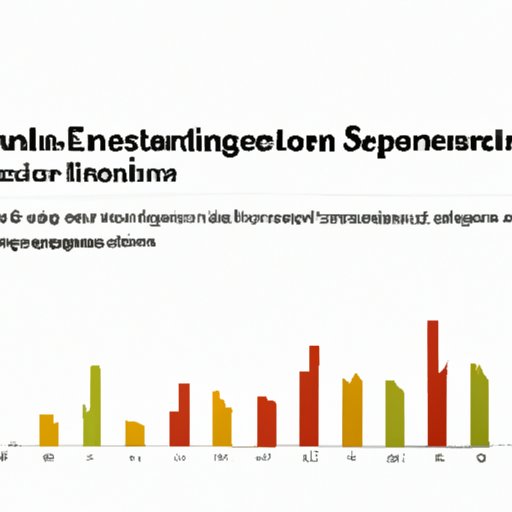Introduction: What is ESG Investing?
ESG investing is an investment strategy that focuses on environmental, social, and governance (ESG) criteria to evaluate potential investments. This type of investing has become increasingly popular in recent years as investors look for ways to ensure their money is being used in a responsible and sustainable manner. By taking ESG criteria into account when making investment decisions, investors can help support companies that prioritize environmental protection, corporate responsibility, diversity and inclusion, and other important social issues.

Section 1: Exploring the Benefits of ESG Investing
In addition to helping promote positive social and environmental change, ESG investing can also be beneficial in terms of financial returns. According to a recent study by the Global Sustainable Investment Alliance, “ESG integration leads to improved risk-adjusted returns, increased portfolio diversification, and reduced volatility.”
Why ESG Investing is Becoming Popular
More and more investors are turning to ESG investing because of the potential benefits it can bring. Not only does it allow them to align their values with their investments, but it can also provide financial rewards. As ESG investing continues to gain traction, many large financial institutions are offering ESG-focused products and services to meet the growing demand.
How ESG Investing Can Help Achieve Financial Goals
By incorporating ESG criteria into their investment decisions, investors can potentially improve their financial performance. For example, research has shown that companies with strong ESG ratings tend to outperform those with weaker ratings. Additionally, ESG investing can help reduce risk and increase diversification, which can result in higher returns over time.
The Impact of ESG Investing on Social and Environmental Issues
In addition to potentially improving financial returns, ESG investing can also have a positive impact on social and environmental issues. By investing in companies that prioritize sustainability and corporate responsibility, investors can help support initiatives that address climate change, poverty, inequality, gender equality, and other pressing global challenges. In this way, ESG investing can have a real and lasting impact on the world around us.
Section 2: The Basics of ESG Investing
In order to understand how to incorporate ESG investing into your portfolio, it’s important to first understand some of the basics. Here are a few key concepts to keep in mind when exploring ESG investing.
What are ESG Criteria?
ESG criteria refer to the environmental, social, and governance factors that are used to evaluate potential investments. These criteria are typically based on industry-specific standards and guidelines that measure a company’s performance in areas such as energy efficiency, employee safety, human rights, and corporate transparency.
Who Qualifies as an ESG Investor?
Anyone can become an ESG investor, regardless of their experience level or financial resources. All you need to do is commit to incorporating ESG criteria into your investment decisions and researching companies with positive ESG ratings. With the right strategy and commitment, anyone can become an ESG investor.
How to Choose an ESG Investment Strategy
When choosing an ESG investment strategy, it’s important to consider your financial goals and risk tolerance. Depending on your situation, you may want to focus on one specific area or spread your investments across multiple sectors. You should also consider the fees associated with different ESG investments and make sure you understand the potential risks and rewards before committing any capital.
Section 3: How to Incorporate ESG Investing into Your Portfolio
Once you’ve decided to pursue ESG investing, there are several steps you can take to incorporate it into your portfolio. Here are a few tips to help you get started.
Researching Companies with Positive ESG Ratings
One of the most important steps in ESG investing is researching companies with positive ESG ratings. There are a number of independent rating agencies that track and rate companies based on their ESG performance. By doing your own research, you can ensure you’re investing in companies that are committed to sustainable and responsible practices.
Diversifying Your ESG Investments
Just like any other type of investing, diversification is key when it comes to ESG investing. To maximize your returns, you should spread your investments across different industries and asset classes. Additionally, you should consider investing in both domestic and international markets to further diversify your portfolio.
Analyzing Risk vs. Return of ESG Investments
Before investing in any ESG-focused product or service, you should analyze the potential risks and rewards. While ESG investing can potentially lead to higher returns, it can also involve greater levels of risk. Make sure you fully understand the features and risks of any ESG investment before committing any capital.

Section 4: How ESG Investing Impacts Financial Returns
When it comes to ESG investing, there are both potential risks and rewards. Here’s what you need to know about the potential impacts of ESG investing on your financial returns.
Potential Risks of ESG Investing
As with any other type of investing, there are always risks associated with ESG investing. For example, if a company you invest in fails to meet its ESG criteria, your investments could suffer. Additionally, there is always the risk of market volatility, which could affect the returns of any investment.
Potential Rewards of ESG Investing
While there are risks associated with ESG investing, there are also potential rewards. Research has shown that companies with strong ESG ratings tend to outperform those with weaker ratings. Additionally, ESG investing can help reduce risk and increase diversification, which can lead to higher returns over time.
Section 5: What Are the Different Types of ESG Investment Strategies?
There are several different types of ESG investment strategies, each of which offers its own set of benefits and risks. Here are a few of the most common strategies.
Equity-Based Strategies
Equity-based strategies involve investing in stocks and other equity securities. This type of strategy is often used by investors who are looking for long-term growth potential. Equity-based strategies typically involve higher levels of risk, but they can also offer higher potential returns.
Fixed Income-Based Strategies
Fixed income-based strategies involve investing in bonds and other fixed income securities. This type of strategy is often used by investors who are looking for income and stability. Fixed income-based strategies typically involve lower levels of risk, but they also offer lower potential returns.
Alternative Strategies
Alternative strategies involve investing in non-traditional assets such as private equity, venture capital, real estate, and commodities. This type of strategy is often used by investors who are looking for higher returns and/or diversification. Alternative strategies typically involve higher levels of risk, but they can also offer higher potential returns.
Section 6: Understanding the Risks and Rewards of ESG Investing
When considering ESG investing, it’s important to understand the potential risks and rewards. Here’s what you need to know.
Assessing the Risks of ESG Investing
It’s important to remember that ESG investing involves the same risks as any other type of investing. Before committing any capital, you should assess the potential risks associated with any investment and make sure you understand the features and terms of any ESG-focused product or service.
Evaluating the Return Potential of ESG Investing
When evaluating the return potential of ESG investing, it’s important to remember that past performance is not necessarily indicative of future results. While ESG investing can potentially lead to higher returns, there is no guarantee that it will outperform traditional investments. As with any other type of investing, it’s important to do your own research and make sure you understand the risks and rewards before committing any capital.

Conclusion: Summary of ESG Investing
ESG investing is an increasingly popular strategy that focuses on environmental, social, and governance criteria when making investment decisions. By incorporating ESG criteria into their investment decisions, investors can potentially improve their financial performance while also having a positive impact on social and environmental issues. However, it’s important to remember that ESG investing involves the same risks as any other type of investing and that past performance is not necessarily indicative of future results.
Tips for Successful ESG Investing
To maximize your chances of success with ESG investing, here are a few tips to keep in mind:
- Do your own research and make sure you understand the potential risks and rewards of any ESG-focused product or service.
- Diversify your ESG investments across different industries and asset classes.
- Analyze the potential risks and rewards of any ESG investment before committing any capital.
- Consider investing in both domestic and international markets to further diversify your portfolio.
By following these tips, you can help ensure that your ESG investments are aligned with your values and financial goals. With the right strategy and commitment, anyone can become an ESG investor.
(Note: Is this article not meeting your expectations? Do you have knowledge or insights to share? Unlock new opportunities and expand your reach by joining our authors team. Click Registration to join us and share your expertise with our readers.)
